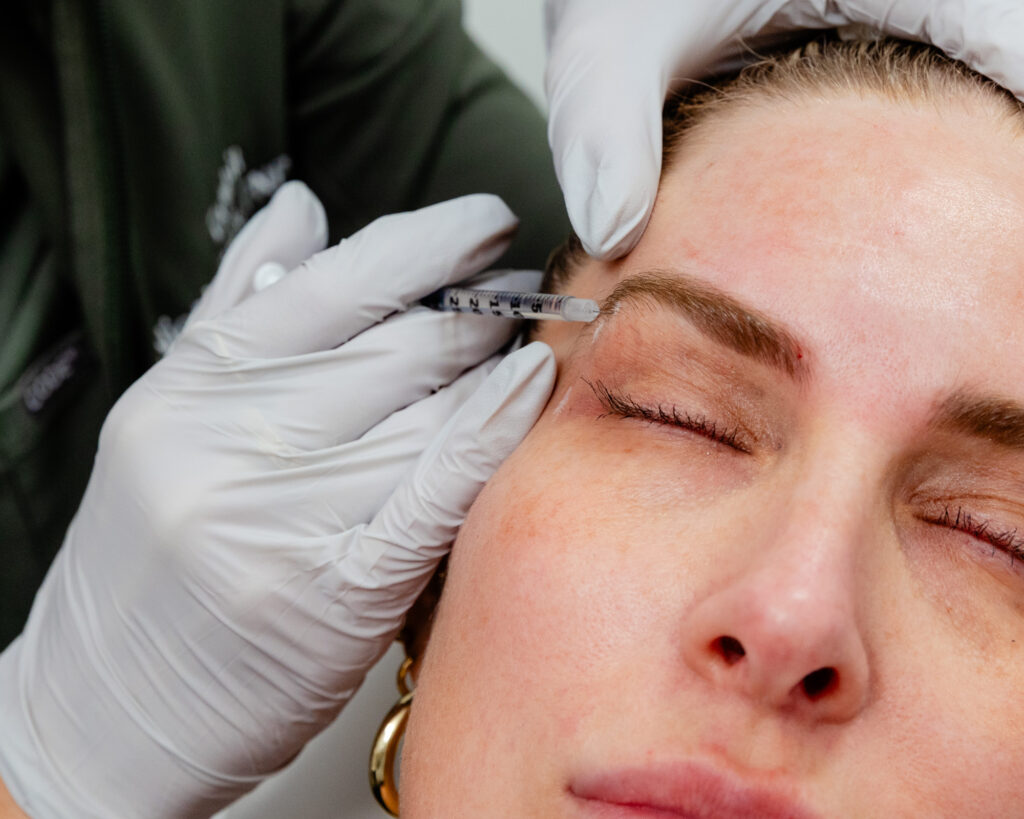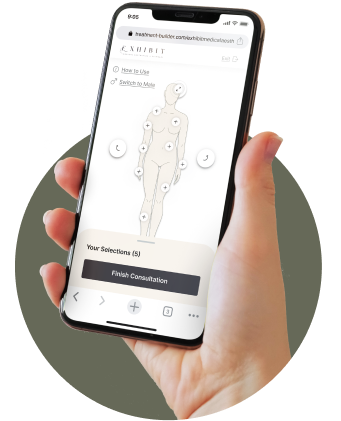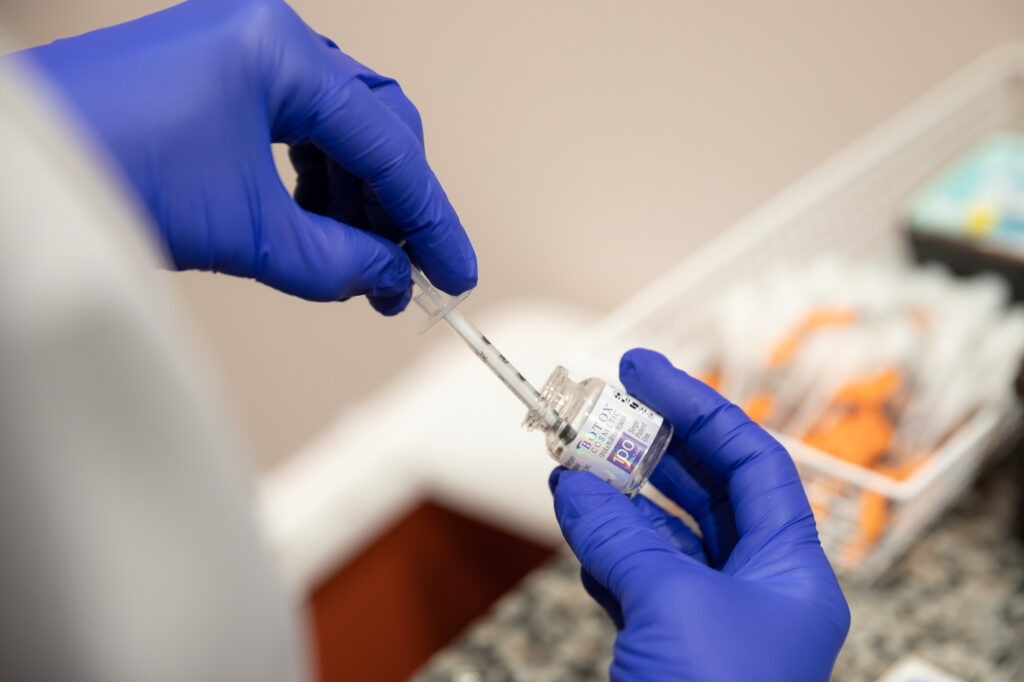
Botox is one of the best-known aesthetic treatments in the world, but how did it gain that status when a variety of wrinkle relaxer formulas are available nowadays? At Exhibit Medical Aesthetics, we offer both Dysport and Botox near Madison, NJ, to address your wrinkles and help you enjoy looking in the mirror each morning.
In this blog, our experts talk about the timeline of wrinkle relaxers, explaining how Botox became one of the most recognizable injectable treatments in the world and how it inspired the creation of other injectable wrinkle solutions. We also go into the details of what the process looks like for getting wrinkle relaxers and how to choose the right one for your needs.
Botox Timeline
Here is the basic timeline for the development of Botox and other similar injectable wrinkle treatments.
1970s | The Beginning of the End of Wrinkles
In the late 1960s and early 1970s, Dr. Alan B. Scott was studying the effects of a neurotoxin called botulinum type A. This toxin is actually a type of bacteria that grows in low-oxygen environments. When ingested, it can cause neuromuscular damage, resulting in the loss of muscular function and even death. While this medical condition, now known as botulism, is rare, it still affects people who consume food that was improperly cooked and/or stored.
However, Dr. Scott saw potential in botulinum type A, and he began researching neurotoxin. He wanted to see if it could be refined and used to help his patients struggling with certain eye disorders, like strabismus or blepharospasm, which affect the muscles within and around the eyes.
With his research, he was hoping to utilize the muscle-relaxing capabilities of the substance to prevent the need for extensive, invasive, and oftentimes painful corrective surgeries.
1991 | FDA-Approval & Initial Growth
Dr. Alan Scott never realized the potential for his discovery until he sold the drug to Allergan, a pharmaceutical company, in 1991. That year, they rebranded the medication, calling it Botox, and received FDA approval to use it for the eye conditions Dr. Scott hoped to treat it.
1992 to 2002 | Botox’s Effects for Aesthetics
Soon after its initial approval, articles quickly started being published in the scientific community about the effects of Botox for aesthetics, especially how effective it was at improving the appearance of glabellar lines.
Then, in 2002, the FDA studied and approved Botox to treat glabellar lines, beginning the impact Botox would have on the aesthetics industry.
2003 to 2006 | Botox Studies in Europe
From 2003 to 2006, other doctors who studied with Dr. Alan Scott began doing more research in Europe. They found that botulinum type A injections could treat other dystonic conditions, or movement conditions causing involuntary muscle contractions. They developed their own version of the injection, calling it Dysport.
While extremely similar to Botox, a slight formulaic difference means Dysport has smaller molecules, making it spread more easily but also making it less potent.
However, it wasn’t until 2006 that a large German study discovered the effects of Dysport on glabellar lines and providers started offering it as another option for an injectable wrinkle treatment.
2006 – 2009 | Dysport & Botox on the World Stage for Wrinkles
From 2006,Galderma studied the effects of Dysport (or Azzalure in Europe) on wrinkles. It was then approved in 2009 for moderate-to-severe glabellar lines. This inspired the development of other wrinkle relaxers, each with slight molecular differences that affect potency, spreadability, and more.
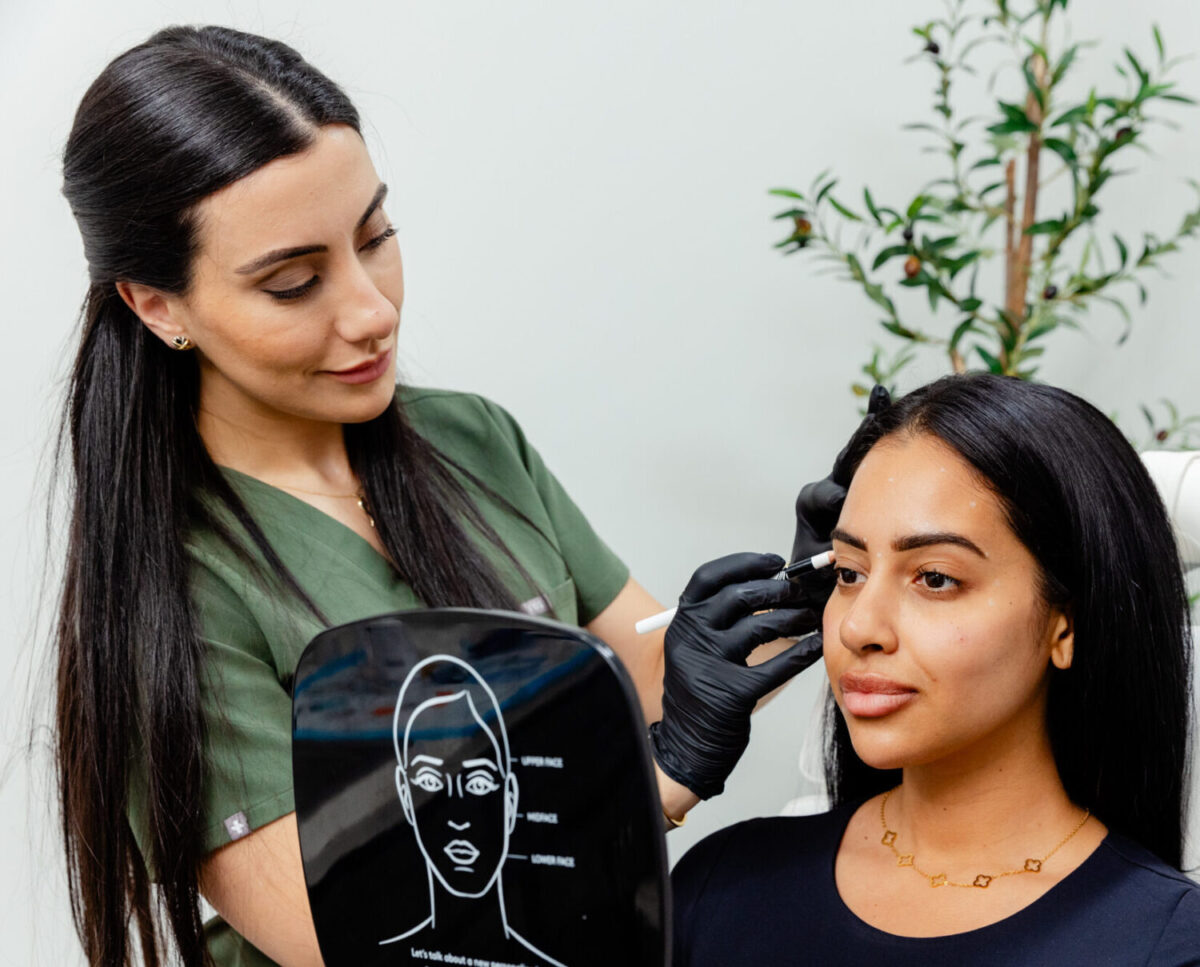
Botox & Dysport at Exhibit
At Exhibit Medical Aesthetics, we offer both Dysport and Botox near Madison, NJ. These both are the longest-standing wrinkle relaxers available, and they have undergone thousands of studies proving their efficacy for both medical and aesthetic purposes.
Dysport
We often recommend Dysport as a great introduction to wrinkle relaxers. Its formula makes the product less potent, so if you are just beginning your aesthetics journey, this injectable helps deliver subtle but noticeable improvements in your complexion.
Since wrinkle relaxers do not provide permanent solutions, and their effects fade with time, you will need regular injections to maintain your results. Typically, you’ll need injections about once every 3 to 4 months.
Some patients receive injections for years, and their bodies can build up a tolerance to the injections, making them less effective over time. To help prevent this, we like to start first-time patients with less-potent injections like Dysport. This way, if the injections become less and less effective over time, we can switch to the more potent Botox formula. This will help you maintain consistent results for longer.
Botox
If you want to use Botox near Madison, we create a personalized care plan for you. Botox has a wide range of aesthetic applications, including:
- Addressing dynamic facial wrinkles
- Slimming the jawline
- Lifting the brows
- Enhancing your lip shape
- Reducing the appearance of a gummy smile
- Smoothing chin dimples
- Improving the appearance of neck bands
No matter what concern has created your interest in Botox, you and your provider can talk about the best possibilities for treatment based on your unique needs. They walk through all your options with you, and together, you create a plan that considers your concerns and goals.
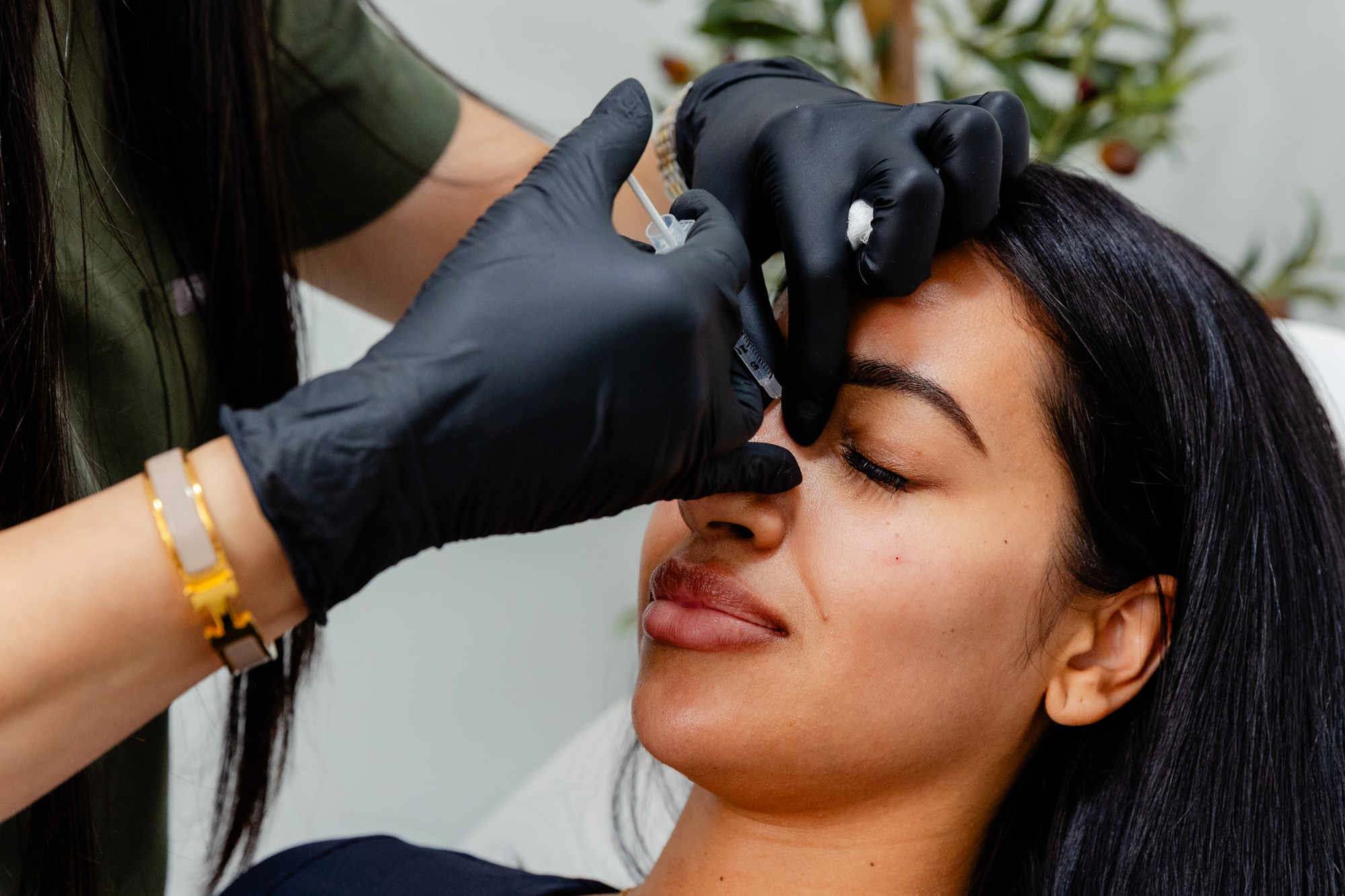
The Injection Process
When you visit our team for Dysport and Botox near Madison, here is what you can expect from the moment you walk through our doors.
Consultation
Your first appointment is a direct meeting with one of our experienced providers. During this time, your provider sits back and listens while you talk about your specific concerns that you would like to address. Our team makes sure to ask you plenty of questions about your health history, including other aesthetic treatments you’ve undergone, what medical conditions you have, or what medications you take.
Once they more clearly understand your needs, they talk with you about your treatment options, including Dysport and Botox. Together, you create a personalized care plan that includes only the treatment you need to successfully achieve both your aesthetic and wellness goals.
Injections
If your provider determines that wrinkle relaxers are right for you, they schedule your injection appointment. On the day of treatment, your provider asks you to arrive without any makeup or other skin products on your face. This makes prepping your skin easier and reduces the risk of infection following the injections.
Your provider cleanses your skin before marking the spots for your injections with white pencil. Our injectors have extensive training and years of experience balancing facial features, so they know exactly where to inject your wrinkle relaxers to properly smooth wrinkles while also allowing you to still make your natural facial expressions.
Results
You will not see the results of your injections until about 5 to 10 days after your appointment, but once they appear, you can expect them to last for about 3 to 4 months. Once the improvements start to fade, you and your provider can schedule regular maintenance sessions at our med spa, where you can receive injections to maintain your results.

Commonly Asked Wrinkle Relaxer Questions
While Botox and Dysport have been around for decades, we understand that you still might have a few questions about them. Here are the most common questions our team hears about Dysport and Botox near Madison, NJ.
If you have a question but can’t find the answer to it here, we encourage you to reach out to our team, who can share the information you need.
Are injections painful?
The process can feel slightly uncomfortable, especially if you are receiving injections for the first time. Before your appointment, you can talk to your injector about the possibility of using a numbing cream. Our other amenities can also help improve your experience and make you more comfortable.
What are the post-care instructions after receiving my injections?
Your provider will give you personalized post-care instructions, but we tell every patient receiving Dysport or Botox near Madison the following:
- Avoid touching, massaging, or scratching the injection sites.
- Stay upright—do not lie down for 3 to 4 hours after receiving Botox or Dysport injections.
- Use gentle skin care products the week after your injections.
- Sleep with your head elevated for the next 2 to 3 days to avoid bruising.
Are there any side effects of Botox or Dysport?
The risk of side effects is very low. The most common issues patients face after receiving their injections are bruising, bleeding, or swelling at the injection site. However, these are minor concerns, and they typically resolve themselves within 2 to 3 days following your appointment.
Will I lose my sense of feeling after getting injections?
No, you should not lose your ability to feel your face after getting Botox or Dysport injections. You should also be able to make your full facial expressions without experiencing any “facial freeze.”

Don’t Let History Make Its Mark on Your Complexion
Aging is a natural process that everyone goes through, but you don’t have to let that process leave its mark on your appearance. If you’re ready to say goodbye to wrinkles, you can either book an appointment or use our complimentary treatment planning tool to see if you would benefit from Dysport & Botox near Madison, NJ.
